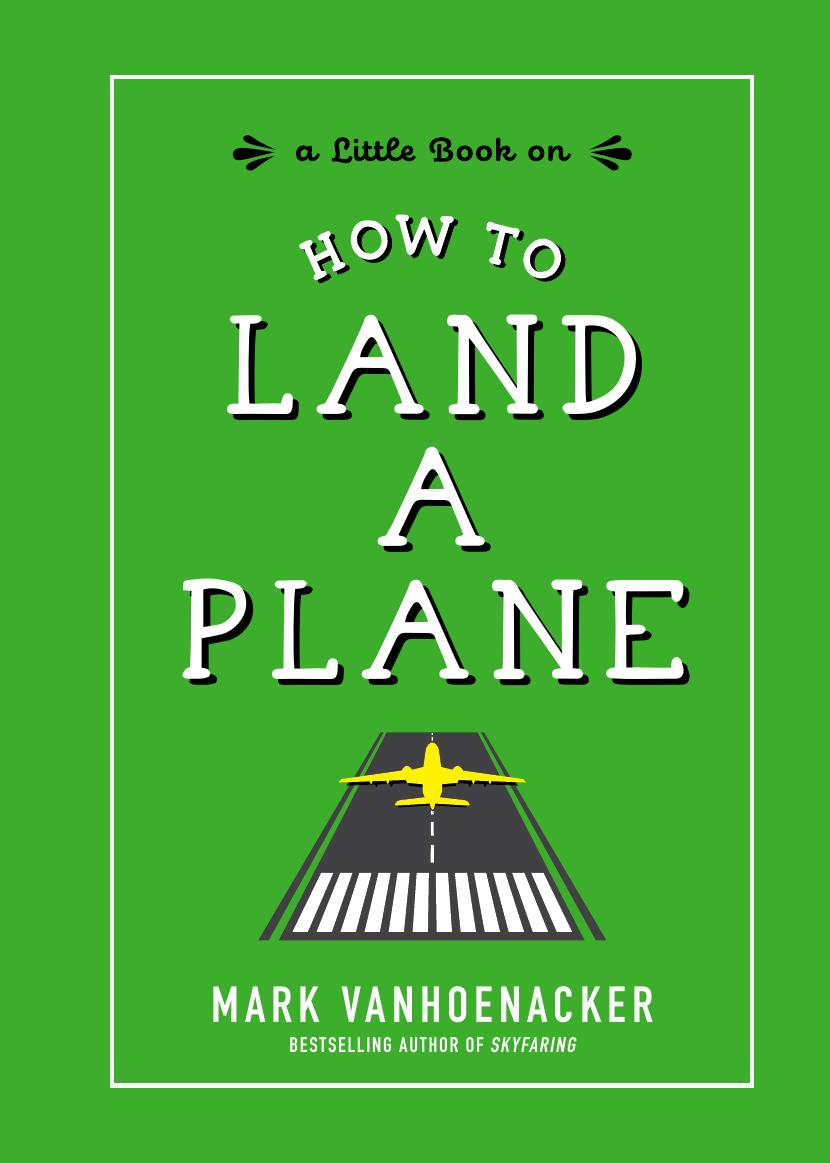How to Land a Plane by Mark Vanhoenacker

Author:Mark Vanhoenacker
Language: eng
Format: epub, pdf
Publisher: The Experiment
When the controller decides that you need to turn, he or she will give you a heading (known as a “vector”), measured in degrees, such as 090 degrees for east. Look down at the heading indicator and then gently turn the control wheel in the desired direction. You don’t want to roll too steeply. Your bank angle—remember the banked racetrack if it helps—is also measured in degrees. I’d advise not rolling to an angle of more than 30 degrees (you can leave your aerobatics training for another day). On many attitude indicators, small indicator lines mark out 10 and 20 degrees of bank. The first bigger line marks 30 degrees.
Remember what I said about how each change you make to the flight path may lead to another required input? Well, here we go again. As you roll, you’ll need to pull back on the control column a little and probably add power too. That’s because some of the lift that was keeping you in level flight is now being deployed “sideways” to turn you. If you don’t create more lift, you’ll start to descend. Pulling back creates that lift (and the more steeply you bank, the more you need to pull). But it also creates more drag, so you’ll need more power to maintain your speed. And so it goes on. That’s why the scan is so important.
The vectors from the controller will keep you on a safe horizontal path. As for your vertical path, if the controller tells you to climb to avoid mountains, then increase power and pull the nose gently up. When you reach your new target altitude, level out by lowering the nose and adjusting the power. To descend, it’s the reverse of the climb. Reduce power, gently lower the nose and the descent follows naturally.
Now you know how to keep the aircraft flying—to aviate. The controller you’re in communication with is helping you to navigate. In fact, you’ve earned a pause for another cup of tea (but actually, keep on scanning). Nor should you miss the chance to have a little fun (the technical aviation term for “fun,” by the way, is “familiarizing yourself with the feel of the airplane”). Try some gentle turns or climbs or, for extra points, combine them in a climbing turn. Enjoy . . .
Download
This site does not store any files on its server. We only index and link to content provided by other sites. Please contact the content providers to delete copyright contents if any and email us, we'll remove relevant links or contents immediately.
| Airport | Commercial |
| Helicopters | History |
| Pictorial | Piloting & Flight Instruction |
| Repair & Maintenance |
Small Unmanned Fixed-wing Aircraft Design by Andrew J. Keane Andras Sobester James P. Scanlan & András Sóbester & James P. Scanlan(32141)
Navigation and Map Reading by K Andrew(4553)
Endurance: Shackleton's Incredible Voyage by Alfred Lansing(3840)
Wild Ride by Adam Lashinsky(1658)
And the Band Played On by Randy Shilts(1615)
The Box by Marc Levinson(1595)
Top 10 Prague (EYEWITNESS TOP 10 TRAVEL GUIDES) by DK(1567)
The Race for Hitler's X-Planes: Britain's 1945 Mission to Capture Secret Luftwaffe Technology by John Christopher(1526)
The One Percenter Encyclopedia by Bill Hayes(1463)
Girls Auto Clinic Glove Box Guide by Patrice Banks(1362)
Trans-Siberian Railway by Lonely Planet(1342)
Looking for a Ship by John McPhee(1320)
Fighting Hitler's Jets: The Extraordinary Story of the American Airmen Who Beat the Luftwaffe and Defeated Nazi Germany by Robert F. Dorr(1300)
Batavia's Graveyard by Mike Dash(1300)
Troubleshooting and Repair of Diesel Engines by Paul Dempsey(1284)
Bligh by Rob Mundle(1273)
TWA 800 by Jack Cashill(1253)
The Great Halifax Explosion by John U. Bacon(1229)
Ticket to Ride by Tom Chesshyre(1228)
